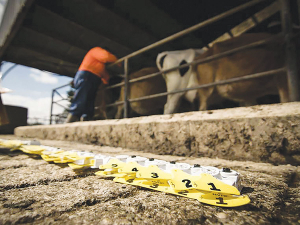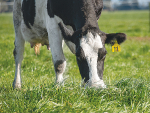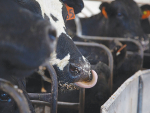The law says calves must be tagged and registered in NAIT before they are moved off farm.
“Remember too, if you’re rearing calves, any future movements they make off farm must be recorded in NAIT and confirmed by the farmer at the other end,” Johnston says.
“This builds animal traceability and supports disease management.”
Saleyards may record movements to their yards on behalf of farmers, but farmers must tag and register calves before moving them off farm.
Farmers buying calves should request an animal status declaration form (ASD) from the seller. This tells the calves’ health status and confirms where the animal originated from.
If you use an information provider such as LIC (Minda), CRV Ambreed or Farm IQ to register your tagged calves, you must ensure the registration has synchronized through to your NAIT account before the animals move off farm.
OSPRI advises farmers to contact their information provider to check they are meeting their NAIT obligations. If you use Minda or Farm IQ software, check your NAIT account regularly to ensure animals have been registered and movements recorded.
Managing and moving calves is a critical factor in animal health. About 1. 5 million calves are reared annually in New Zealand.
Not tagging and registering calves in NAIT affects the accuracy of the system and undermines lifetime animal traceability, a basic aspect of NAIT. If you don’t you could be fined or prosecuted if caught.
Johnston says dairy farmers and lifestylers can also help improve tag retention by correctly tagging newborns.
“Tag your calves to the right ear, the inner centre, between the two veins for better retention.”
Tagging stock
All cattle and deer must be tagged with a NAIT approved RFID tag and registered in the NAIT online system within six months of birth or before they are moved off farm, whichever comes first.
Once NAIT animals are tagged, animal registration must be completed within seven days, or before their first off farm movement, whichever comes first.
• NAIT tags may not be removed without permission from NAIT
• NAIT tags may not be reused for any reason
• NAIT animals may not be moved to a different NAIT location without a NAIT tag (exemptions apply under the NAIT Act, see below)
When tagging NAIT animals, we recommend that you follow the tag manufacturer’s instructions for maximum tag retention.
Also, record the tag number(s) or the tag sequence range used when tagging animals to make it easier to register the animals in the NAIT online system, or to locate the tag numbers in your NAIT account when re-registering the animals if they have lost their original RFID tag.
More information:


















